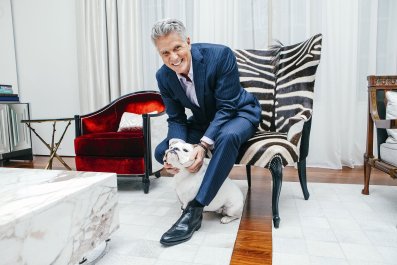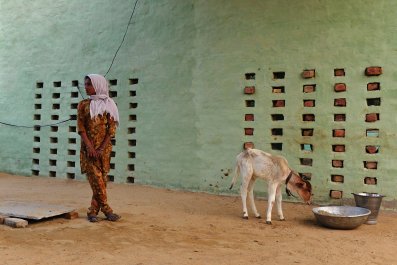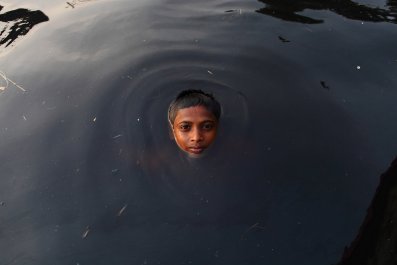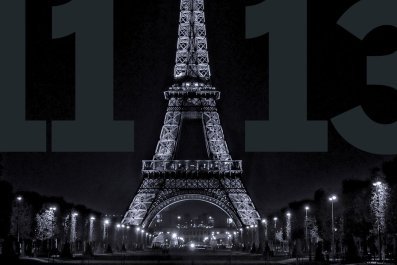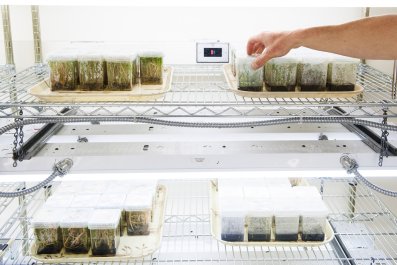Upon leaving Bernard Buffet's exhibition of Paris landscapes in 1957 and seeing the city anew through the painter's eyes, Jean Cocteau confided to his diary that "the test that a painter is a painter is when everything starts to resemble his painting."
Among the paintings Cocteau had viewed in Buffet's exhibition was a canvas depicting one of the metal bridges over the Canal St. Martin. It is a classic Buffet; harsh and linear, the branches of the leafless trees clawing like skeletal fingers at a low, steel-colored sky.
Look at it just once, and you will find it has the power to imprint itself on the mind in a way that overlays the real thing when you see it while strolling up the Quai de Valmy, as I found myself doing in October. But looking at that painting, I do not see merely Buffet's depopulated Paris—I also see the kingdom of Henri Zaks. A wiry man in his 60s—with the mind and energy of someone 20 years his junior—Zaks is an artist, albeit one who works with fur and leather rather than oil and canvas, and he works in a building just past the left edge of the scene depicted in Buffet's canvas.
Seraphin is the name given to the company that has, over the years, sprawled to include five nearby workshops devoted to creating some of the finest leather blousons, jackets, coats, parkas and shirts that mankind produces. Make no mistake, these are working workshops: rolled hides being carried through the porte cochere; men at work with sheepskin mittens buffing and patinating hides; the clatter of sewing machines; piles of hangers, bags and boxes ready to receive finished garments.
Zaks is an artisan and proud of it, but he is a French artisan, so he can hold his own when it comes to discussing such important topics as foie gras and Chateau Petrus. Outward clues to his success are few, however. He gets around Paris on a scooter, and if he has an office at his factory I have never seen it. There is a desk in his light-flooded corner showroom on the first floor, at which he seldom sits for longer than it takes to drink an espresso or, if he is working late—and I have been here at 10 o'clock in the evening—a small glass of cognac. He is simply too excited by what he is doing to sit still.
In 1967, at age 17, Zaks started work in a leather garment factory. There he met his wife, Sara, who still works with him today, carrying out the bespoke orders. In 1975, they decided to set up on their own with a workforce of Sicilian tailors—and that is the key to understanding Seraphin. The company's employees treat leather as a fabric to be worked with, rather than a material that restricts the type of garment that can be made. Thus, Zaks's summer collection today is just as comprehensive as his winter offerings; his whisper-weight, cashmere-soft, parchment-thin blousons in his "nymph" lambskin are perfect for those cooler summer evenings.
He can work in conventional exotic skins and is creating a collection for the Russian luxury goods conglomerate Mercury. To my mind, however, his interpretation of luxury is more about imagination, quality and execution than it is about conventionally precious materials.
What is so remarkable about him is his enthusiasm. He has been doing this for almost 50 years, and yet his eyes almost glow with excitement when he talks about a new way of treating leather: Japanese tie-dye technique applied to Alaskan caribou, for example. Not a common sight anywhere—except the Quai de Valmy.
Indeed, although this is a prototypically central Parisian location, Seraphin is an atlas of the epidermal world. As well as the Alaskan caribou tie-dyed in Japan, Zaks's basement warehouse brims with arcane leathers sourced from corners of the world one never knew of. Since coming to know him, I have found that my geography has improved, as I have handled, among many others, Afghan goatskin normally intended for shoes but made by him into a spectacular musquash-lined parka; Eritrean and Ethiopian lambskin of an almost immoral softness, perfectly suited to summer leathers; Mongolian goat; Svalbard elk; and buffalo from the Hunza Valley in Pakistan.
Zaks is particularly excited about the buffalo skin, which he has transformed into suede. "You can look anywhere else in the world, but you won't find this. I buy the raw material over there and then work on it in France," he says, proffering a stout yet sleek blouson in this, his latest innovation.
In addition to locating new leathers, he is always looking for ways to enhance more classic skins, and it is difficult to gauge whether he is more pleased with his Hunza Valley buffalo suede or the Loden finish he has succeeded in imparting to deerskin, using the fibers of the skin to create a nap—the touchable, brushable texture that gives suede its characteristic handle—that to the eye and to the touch is uncannily similar to the famous, hard-wearing Austrian fabric. Only I have yet to see a Loden the color of vintage denim, just one of the prismatic banquet of hues this unusual leather masquerading as fabric is available in.
It is not as though I need a new blouson, but it occurs to me that I ought to have one in Hunza buffalo suede, and I place an order. It is only then that Zaks reveals that for summer he has perfected a nymph version of crocodile, working with a gloving grade of skin to create the unique handle and feel that characterize his work. And although my wardrobe has yet to contain such a garment, I fear that the cost will militate against a purchase. Then again, it is intended for spring/summer 2017—so there is time to save up for it.





